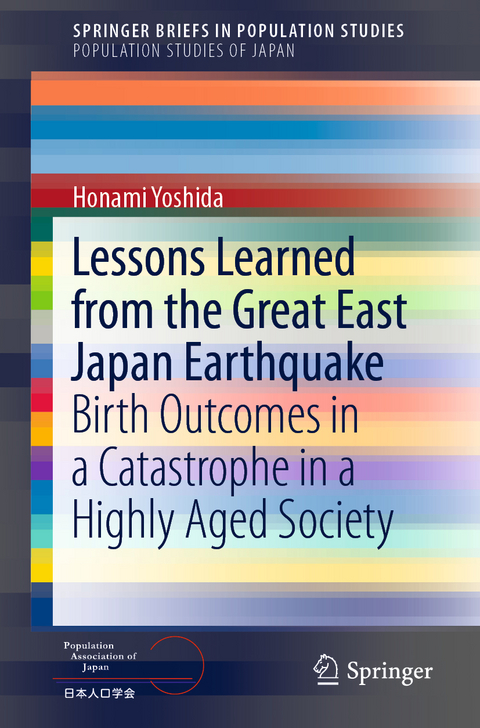
Lessons Learned from the Great East Japan Earthquake
Birth Outcomes in a Catastrophe in a Highly Aged Society
Seiten
2021
|
1st ed. 2021
Springer Verlag, Singapore
978-981-10-4390-1 (ISBN)
Springer Verlag, Singapore
978-981-10-4390-1 (ISBN)
This book provides insights into the enormous impact of fetal and newborn loss in the aftermath of the natural disasters that Japanese society constantly has to face. It first reveals effect of the Great East Japan Earthquake in 2011 on the next generation and reproductive attitudes and shows that prenatal care strategies for emergencies had not been established by any local government in Japan. With continuing research on birth outcomes in the area surrounding the catastrophe, the authors emphasize the importance of the pre-hospital obstetric care team in disaster response and highlight the inequality in health care in a highly aging society like Japan, where perinatal health care is given lower priority than elderly care.
Following the creation of a specialized project for pre and postnatal care the authors conducted surveys on how community preparedness in maternal and child health for post-disaster areas impacted population changes.
This book is a valuable resource for researchers who are interested in the association between rapid population decline and the disaster management system for maternal and child health, as well as the effect of culture, gender bias, and family traditions.
Following the creation of a specialized project for pre and postnatal care the authors conducted surveys on how community preparedness in maternal and child health for post-disaster areas impacted population changes.
This book is a valuable resource for researchers who are interested in the association between rapid population decline and the disaster management system for maternal and child health, as well as the effect of culture, gender bias, and family traditions.
Honami Yoshida, Senior Researcher, Department of Health Promotion, National Institute of Public Health
Introduction.- Observational study to see a huge impact of disaster on Japanese population: National Database study.- Fetal loss and maternal death in disaster area.- Maternal and Child Health in disaster: Lessons learned by mega-disaster in Japan.- Community Preparedness toolkits for post-disaster maternal care.- Local governmental obstetrics training and network building system.
| Erscheinungsdatum | 09.04.2021 |
|---|---|
| Reihe/Serie | Population Studies of Japan |
| Population Studies of Japan | |
| SpringerBriefs in Population Studies | SpringerBriefs in Population Studies |
| Zusatzinfo | 25 Illustrations, color; 11 Illustrations, black and white; XI, 88 p. 36 illus., 25 illus. in color. |
| Verlagsort | Singapore |
| Sprache | englisch |
| Maße | 155 x 235 mm |
| Themenwelt | Sozialwissenschaften ► Pädagogik ► Sozialpädagogik |
| Sozialwissenschaften ► Soziologie ► Empirische Sozialforschung | |
| Sozialwissenschaften ► Soziologie ► Mikrosoziologie | |
| Sozialwissenschaften ► Soziologie ► Spezielle Soziologien | |
| Wirtschaft | |
| Schlagworte | Aged Society • earthquakes • Health Care • Japanese family • Low fertility |
| ISBN-10 | 981-10-4390-6 / 9811043906 |
| ISBN-13 | 978-981-10-4390-1 / 9789811043901 |
| Zustand | Neuware |
| Haben Sie eine Frage zum Produkt? |
Mehr entdecken
aus dem Bereich
aus dem Bereich
Grundlagen - Konzepte - Methoden
Buch | Softcover (2023)
Kohlhammer (Verlag)
34,00 €
Entwicklung - Versorgung - Bildung
Buch | Softcover (2021)
Kohlhammer (Verlag)
42,00 €
Orientierungswissen für die Soziale Arbeit
Buch | Softcover (2024)
Kohlhammer (Verlag)
36,00 €


